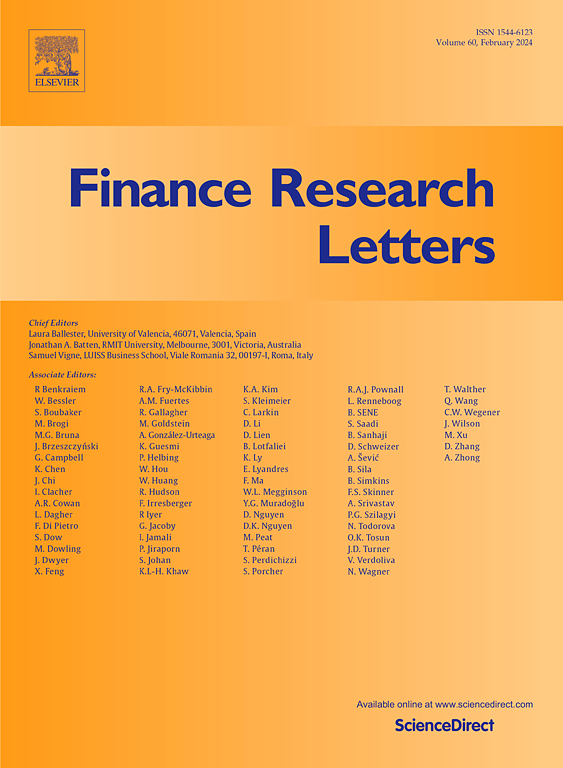The valuation allowance for deferred tax assets and stock price crash risk
IF 6.9
2区 经济学
Q1 BUSINESS, FINANCE
引用次数: 0
Abstract
Using a large sample of U.S. firms from 1994 to 2023, we provide strong and robust evidence that the reporting of a valuation allowance for deferred tax assets is negatively associated with future stock price crash risk. This finding suggests that the valuation allowance conveys a timely signal of a firm’s deteriorating expected future performance. Additionally, the negative association is more pronounced for firms in opaque information environments, where the valuation allowance is perceived as more credible. In contrast, the effect is weaker for firms facing higher tax-related uncertainty, as their valuation allowance adjustments may reflect aggressive tax strategies that could increase future firm-specific risk. Overall, our results are consistent with the notion that valuation allowances provide a valuable, timely signal of a firm’s expected future underperformance, which, in turn, reduces stock price crash risk.
递延税项资产和股价崩盘风险的估值备抵
使用1994年至2023年的美国公司大样本,我们提供了强有力的证据,证明递延税项资产估值准备的报告与未来股价崩盘风险呈负相关。这一发现表明,估值准备金及时传达了公司预期未来业绩恶化的信号。此外,在不透明的信息环境中,公司的负面关联更为明显,在这种环境中,估值津贴被认为更可信。相比之下,对于面临较高税收相关不确定性的公司,这种影响较弱,因为它们的估值准备调整可能反映出激进的税收策略,这可能会增加未来公司特有的风险。总体而言,我们的研究结果与以下观点是一致的,即估值允许为公司预期的未来表现不佳提供了有价值的、及时的信号,这反过来又降低了股价崩盘的风险。
本文章由计算机程序翻译,如有差异,请以英文原文为准。
求助全文
约1分钟内获得全文
求助全文
来源期刊

Finance Research Letters
BUSINESS, FINANCE-
CiteScore
11.10
自引率
14.40%
发文量
863
期刊介绍:
Finance Research Letters welcomes submissions across all areas of finance, aiming for rapid publication of significant new findings. The journal particularly encourages papers that provide insight into the replicability of established results, examine the cross-national applicability of previous findings, challenge existing methodologies, or demonstrate methodological contingencies.
Papers are invited in the following areas:
Actuarial studies
Alternative investments
Asset Pricing
Bankruptcy and liquidation
Banks and other Depository Institutions
Behavioral and experimental finance
Bibliometric and Scientometric studies of finance
Capital budgeting and corporate investment
Capital markets and accounting
Capital structure and payout policy
Commodities
Contagion, crises and interdependence
Corporate governance
Credit and fixed income markets and instruments
Derivatives
Emerging markets
Energy Finance and Energy Markets
Financial Econometrics
Financial History
Financial intermediation and money markets
Financial markets and marketplaces
Financial Mathematics and Econophysics
Financial Regulation and Law
Forecasting
Frontier market studies
International Finance
Market efficiency, event studies
Mergers, acquisitions and the market for corporate control
Micro Finance Institutions
Microstructure
Non-bank Financial Institutions
Personal Finance
Portfolio choice and investing
Real estate finance and investing
Risk
SME, Family and Entrepreneurial Finance
 求助内容:
求助内容: 应助结果提醒方式:
应助结果提醒方式:


